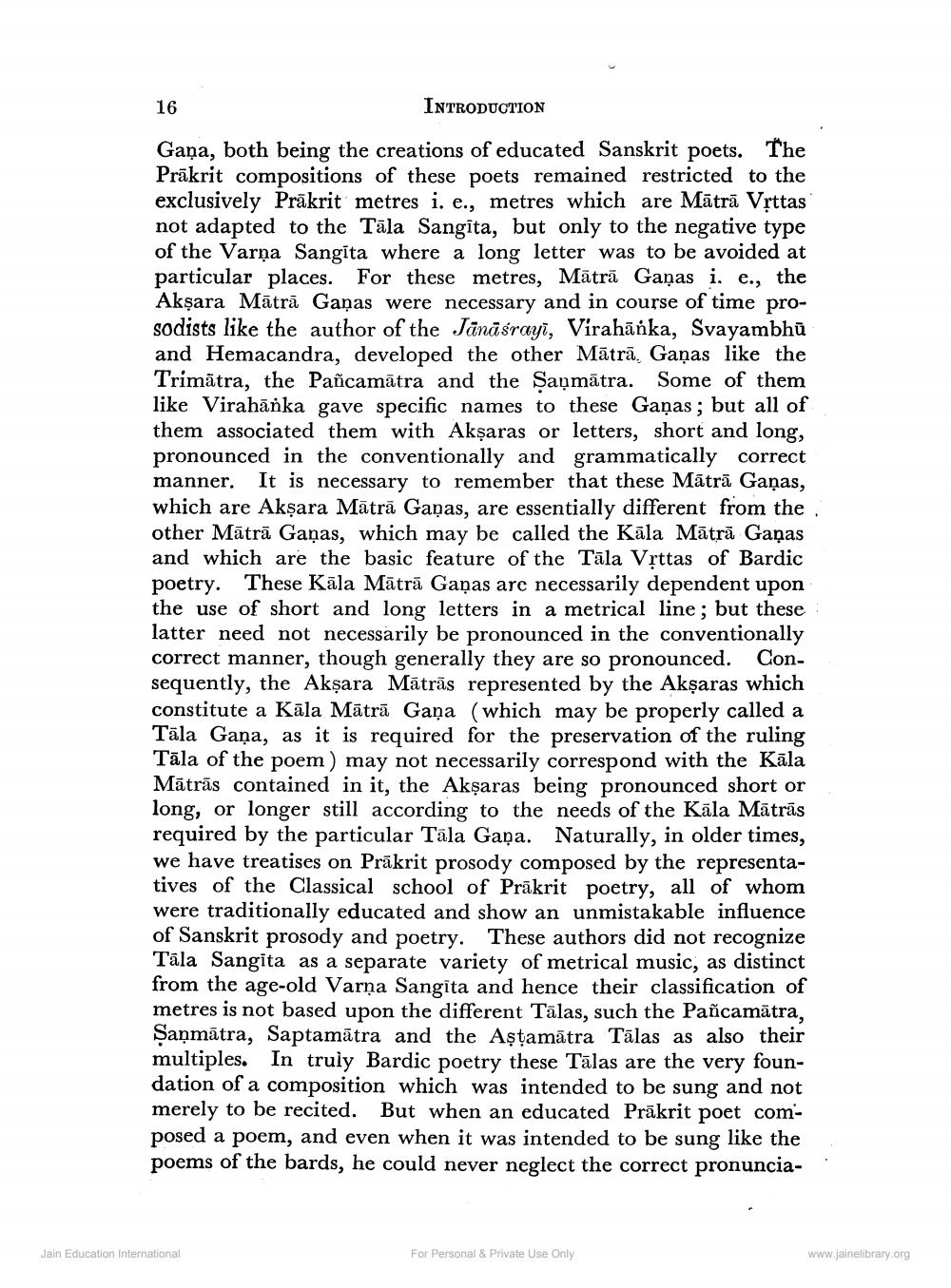________________
INTRODUCTION
Gana, both being the creations of educated Sanskrit poets. The Prakrit compositions of these poets remained restricted to the exclusively Prakrit metres i. e., metres which are Mātrā Vṛttas not adapted to the Tala Sangita, but only to the negative type of the Varna Sangita where a long letter was to be avoided at particular places. For these metres, Mātrā Ganas i. c., the Akşara Mäträ Gaņas were necessary and in course of time prosodists like the author of the Janasrayi, Virahäñka, Svayambha and Hemacandra, developed the other Mäträ, Gaņas like the Trimätra, the Pañcamātra and the Ṣapmatra. Some of them like Virahanka gave specific names to these Gaņas; but all of them associated them with Akṣaras or letters, short and long, pronounced in the conventionally and grammatically correct manner. It is necessary to remember that these Mātrā Gaņas, which are Aksara Mātrā Gaņas, are essentially different from the other Mātrā Ganas, which may be called the Kāla Mātrā Gaņas and which are the basic feature of the Tala Vṛttas of Bardic poetry. These Kāla Mäträ Gapas are necessarily dependent upon the use of short and long letters in a metrical line; but these latter need not necessarily be pronounced in the conventionally correct manner, though generally they are so pronounced. Consequently, the Akṣara Mātrās represented by the Akṣaras which constitute a Küla Mäträ Gaṇa (which may be properly called a Tala Gana, as it is required for the preservation of the ruling Tāla of the poem) may not necessarily correspond with the Kāla Mātrās contained in it, the Aksaras being pronounced short or long, or longer still according to the needs of the Kala Mātrās required by the particular Tāla Gapa. Naturally, in older times, we have treatises on Präkrit prosody composed by the representatives of the Classical school of Prakrit poetry, all of whom were traditionally educated and show an unmistakable influence of Sanskrit prosody and poetry. These authors did not recognize Tāla Sangita as a separate variety of metrical music, as distinct from the age-old Varna Sangita and hence their classification of metres is not based upon the different Tālas, such the Pañcamātra, Sanmätra, Saptamātra and the Aṣṭamitra Tālas as also their multiples. In truly Bardic poetry these Talas are the very foundation of a composition which was intended to be sung and not merely to be recited. But when an educated Prakrit poet composed a poem, and even when it was intended to be sung like the poems of the bards, he could never neglect the correct pronuncia
16
Jain Education International
For Personal & Private Use Only
www.jainelibrary.org




